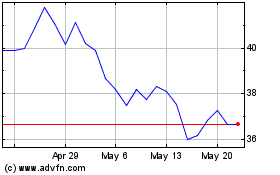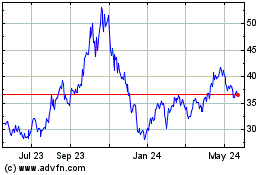The ETF world is gaining immense popularity as evidenced by the
roughly $1.3 trillion invested in the space. At least part of this
interest is due to low costs, tax efficiency and transparency,
while the large number of strategies that are easily accessible by
ETFs hasn’t hurt either.
What are leveraged inverse ETFs?
Leveraged inverse ETFs (often known as ‘ultra-short’ funds)
occupy a small slice of the ETF space. These ETFs provide opposite
exposure that is a multiple (i.e – 2X or -3X) of the performance of
the underlying index. These funds employ various investment
strategies such as use of swaps, futures contracts and other
derivative instruments to accomplish their objectives.
Since most of these ETFs seek to attain their goals on a daily
basis, their performance could vary significantly from the inverse
performance of their underlying index or benchmark, over a longer
period when compared to the short period (such as, weeks, months or
years) due to their compounding effect (read: Leveraged and Inverse
ETFs: Suitable Only For Short Term Trading). This phenomenon can be
explained by an example below.
Suppose, an investor buys a leveraged inverse ETF for $100 that
has two times (2X) exposure to the underlying index of say 10,000.
If the index goes up by 1% to 10,100 on day 1, then the market
price of the ETF moves down by 2% to $98 on the same day. Again,
when the index goes up by another 1% to 10,201 on day 2, then the
ETF value goes down by another 2% to $96.04.
Over the cumulative two days, the index is up by 2.01% while the
ETF is down by 3.96% (less than the two times as stated by the fund
objective). As a result, the performance of the fund and index can
vary as we take longer periods for consideration.
Investors should also note that leveraged inverse ETFs involve a
great deal of risk when compared to traditional ETFs. They are
often more costly and can be less tax-efficient, as they can see
capital gains through use of swaps and other derivatives
instruments.
How to Play?
Still, the space remains incredibly popular for investors
looking for high bang-for-your-buck ways to hedge in a short-time
period. For these traders, there are more than 90 leveraged inverse
funds in the space targeting different asset classes.
In this article, we take a look at the ten biggest and most
popular ETFs for those investors who are new to the leveraged
inverse technique (see more ETFs in the Zacks ETF Center). While
these products might not necessarily be the best choices in their
respective markets, these have become the popular vehicles in this
sector.
A quick guide to these ETFs could provide investors a great
assistance in choosing a heavily traded—and thus hopefully a tight
bid ask spread product—for their portfolios for those out there who
are looking for a high quality and potent hedge:
ProShares UltraShort Barclays 20+ Year Treasury ETF
(TBT)
This fund, launched in April 2008, was ProShares’ second inverse
ETF offering in the long-term Treasury bond space (read: Long Term
Treasury ETFs: Ultimate QE3 Play?). It seeks to deliver twice (2X
or 200%) the inverse (opposite) of the daily performance of the
Barclays 20+ Year Treasury Bond Index. With holdings of 19
securities, the index has lower default risk due to the inclusion
of top rated - AAA bonds but higher interest rate risk given
modified duration of 18.65 years. The effective maturity of the
index currently stands at 27.85 years.
The products fall under the “high risk, high reward” category of
financial instruments and investing in it involves daily portfolio
tracking and thus is not suitable for all investors. Nevertheless,
the product is extremely popular and has a whopping $3.00 billion
in its asset base, and it sees an average volume of roughly three
million shares a day with a cost of 93 bps a year.
ProShares UltraShort S&P 500 ETF
(SDS)
Launched in July 2006, this fund seeks to deliver twice the
inverse of the daily performance of the S&P 500 Index. With
holdings of 500 securities, the fund has a certain tilt towards the
technology sector with Apple Inc. (AAPL), Exxon Mobil (XOM) and
General Electric (GE) as the top three firms (read: Three ETFs with
the Most Apple Exposure). The product is largely concentrated in
large cap firms with a 91% share, while the remainder goes to mid
and small caps.
The ETF trades in volumes of about 8.1 million shares per day,
suggesting that investors do not have to pay extra costs for this
popular product beyond the expense ratio of 0.89%. It has attracted
over $1.9 billion of assets but like many on this list, has seen a
weak long term performance.
Direxion Daily Small Cap Bear 3X Shares
(TZA)
This fund, launched by Direxion in November 2008, provides daily
investment results, before fees and expenses, of three times the
inverse of the performance of the Russell 2000 index. The
underlying index, a subset of Russell 3000 index, measures the
performance of the small-cap segment of the U.S. equity space and
is widely spread across a number of sectors and securities (read:
Guide to Small Cap Emerging Market ETFs).
The fund is popular with assets of $780 million under
management. It charges 95 bps in fees per year and trades in high
volumes of more than 19 million shares per day on average. Due to
its 300% exposure, TZA is one of the worst performers in the
leveraged equity space over the long haul, but the fund represents
one of the best ways to access the small cap market from a bearish
perspective while simultaneously using leverage.
ProShares UltraShort Euro
(EUO)
Launched in November 2008, this ETF provides twice the inverse
exposure, before fees and expenses, to the daily performance of the
U.S. dollar price of the Euro. The product has gained immense
popularity attracting about $700 million in assets this year, as
the common currency in much of Europe has come increasingly under
fire.
The fund charges annual fees of 95 bps from investors and trades
in average daily volumes of more than one million shares per day.
The ETF has done better than most on this list, losing about 2.9%
in the YTD time frame.
Direxion Daily Financial Bear 3X Shares
(FAZ)
This fund provides a bearish exposure to the financial sector.
It seeks daily investment results, before fees and expenses, of
three times the inverse of the daily performance of the Russell
1000 Financial Services Index.
The underlying Index measures the performance of the financial
services sector of the large cap U.S. equity market. The fund is
skewed towards the insurance and banking sectors with Wells Fargo
(WFC), Berkshire Hathaway and JP Morgan & Chase (JPM) as the
top three securities in the portfolio.
The ETF trades in robust volumes of about 10 million shares per
day, suggesting that investors do not have to pay extra costs for
this popular product beyond the expense ratio of 0.95%. It has
attracted over $640 million of assets and was launched in November
2008 (read: Does Your Portfolio Need a Financial ETF?).
Like its small cap leverage fund, Direxion’s FAZ is also one of
the worst performers in the leveraged equity space this year,
though it can be a potent product when financial markets are
struggling.
ProShares UltraPro Short S&P 500
(SPXU)
This fund seeks to deliver three times the inverse of the daily
performance of the S&P 500 Index. When compared to the
ProShares two times exposure SDS, SPXU has similar holding patterns
but is less popular, as it trades in average daily volumes of about
4.7 million shares.
The fund charges slightly higher fees of 95 bps per year.
Launched in June 2009, the product has managed assets of $550
million making it a relatively popular product for those looking
for a hedge against the S&P 500.
ProShares UltraShort QQQ
(QID)
This fund seeks daily investment results, before fees and
expenses, of twice the inverse of the daily performance of the
NASDAQ-100 Index, which targets the large cap segment of the U.S.
equities market. The fund is heavily exposed towards the technology
sector with Apple, Microsoft (MSFT) and Google (GOOG) as the top
three holdings.
With AUM of $450 million, the fund is popular and liquid thanks
to average daily volumes of about 4.6 million shares a day. The
fund was launched in July 2006 and charges 95 bps in fees per
year.
ProShares UltraShort Barclays 7-10 Year Treasury ETF
(PST)
Another popular fund in the fixed income space is PST, launched
in April 2008, targeting the mid-term Treasury bond space. This
fund seeks to deliver twice the inverse of the daily performance of
the Barclays 7-10 Year Treasury bond index.
With holdings of 20 securities, the index has lower default risk
due to the inclusion of top rated (AAA) bonds and relatively lower
interest rate risk given a modified duration of 7.73 years. The
effective maturity of the index is currently 8.55 years.
Unlike the ProShares long-term Treasury bond ETF, the product
trades in comparatively lower volumes of about 65,000 shares and
has only $300 million of assets. The product has fared slightly
better than its long-term counterpart, losing about 9.73% in the
year (as of September 28).
ProShares UltraShort Dow 30
(DXD)
Launched in July 2006, this fund seeks to deliver twice the
inverse of the daily performance of the Dow Jones Industrial
Average, which is a price-weighted index of 30 blue-chip U.S.
stocks. The product focuses on the large cap segment with the
industrial sector at the top. International Business Machines
(IBM), Chevron (CVX) and 3M Co. (MMM) take the top three spots in
the basket.
The fund so far has managed assets of $300 million with an
average volume of more than 800,000 shares a day. Like many other
products on the list, this one charges a fee of 0.95% per year
(read: Three Industrial ETFs Outperforming XLI).
Direxion Daily 20-Year Treasury Bear 3X Shares ETF
(TMV)
Launched in April 2009, this fund seeks daily investment
results, before fees and expenses, of thrice the inverse of the
performance of the NYSE 20 Year Plus Treasury Bond Index. The
underlying index is a multiple-security fixed income index that
aims to track the total returns of the long-term 20 year T-Bond and
overall greater maturity range of the U.S. Treasury bond
market.
The fund is popular with assets of $300 million under
management. It charges 95 bps in fees per year and trades in
volumes of about 280,000 shares per day on average (read: 7 Bond
ETFs Yielding More Than 10-Year Treasury Rates).
Want the latest recommendations from Zacks Investment Research?
Today, you can download 7 Best Stocks for the Next 30
Days. Click to get this free report >>
PRO-ULSH DOW30 (DXD): ETF Research Reports
PRO-ULS EURO (EUO): ETF Research Reports
DIR-FIN BEAR 3X (FAZ): ETF Research Reports
PRO-ULS L7-10YT (PST): ETF Research Reports
PRO-ULSH QQQ (QID): ETF Research Reports
PRO-ULSH S&P500 (SDS): ETF Research Reports
PRO-ULT SH S&P5 (SPXU): ETF Research Reports
PRO-ULS L20+YRT (TBT): ETF Research Reports
DIR-D 20Y+T BR3 (TMV): ETF Research Reports
DIRX-SC BEAR 3X (TZA): ETF Research Reports
To read this article on Zacks.com click here.
Zacks Investment Research
Want the latest recommendations from Zacks Investment Research?
Today, you can download 7 Best Stocks for the Next 30 Days. Click
to get this free report
Direxion Daily 20 plus Y... (AMEX:TMV)
Historical Stock Chart
From Mar 2024 to Apr 2024

Direxion Daily 20 plus Y... (AMEX:TMV)
Historical Stock Chart
From Apr 2023 to Apr 2024
